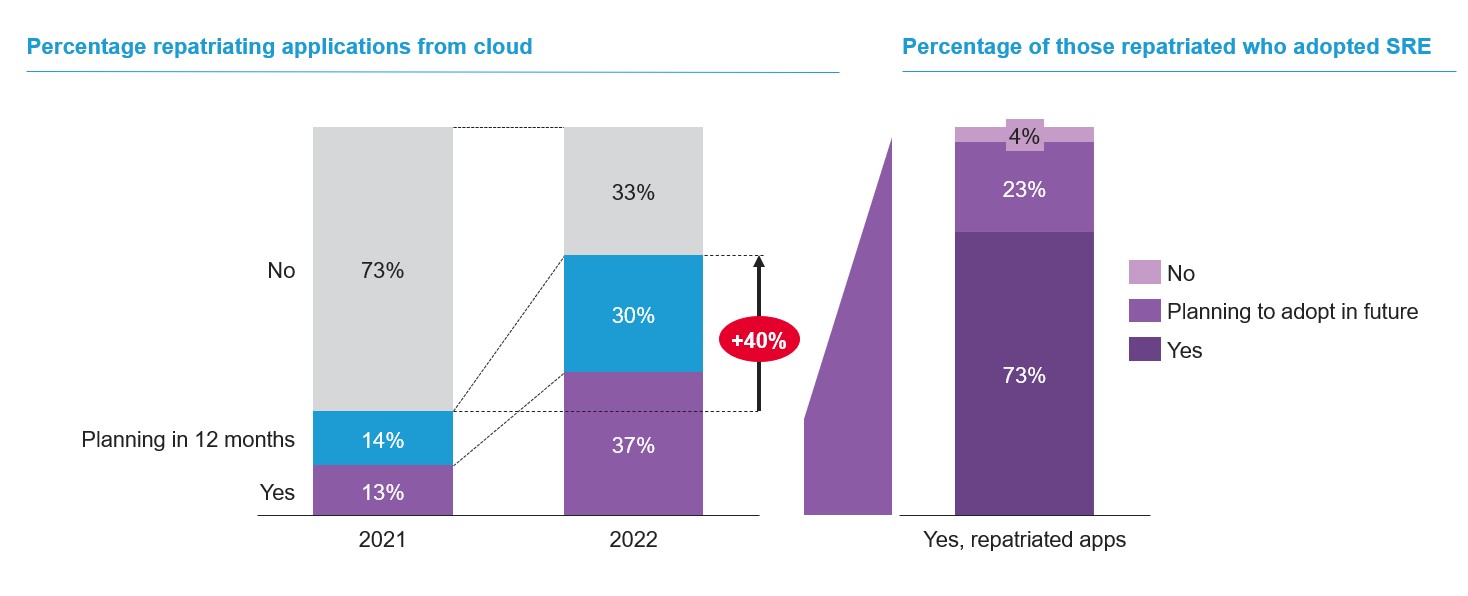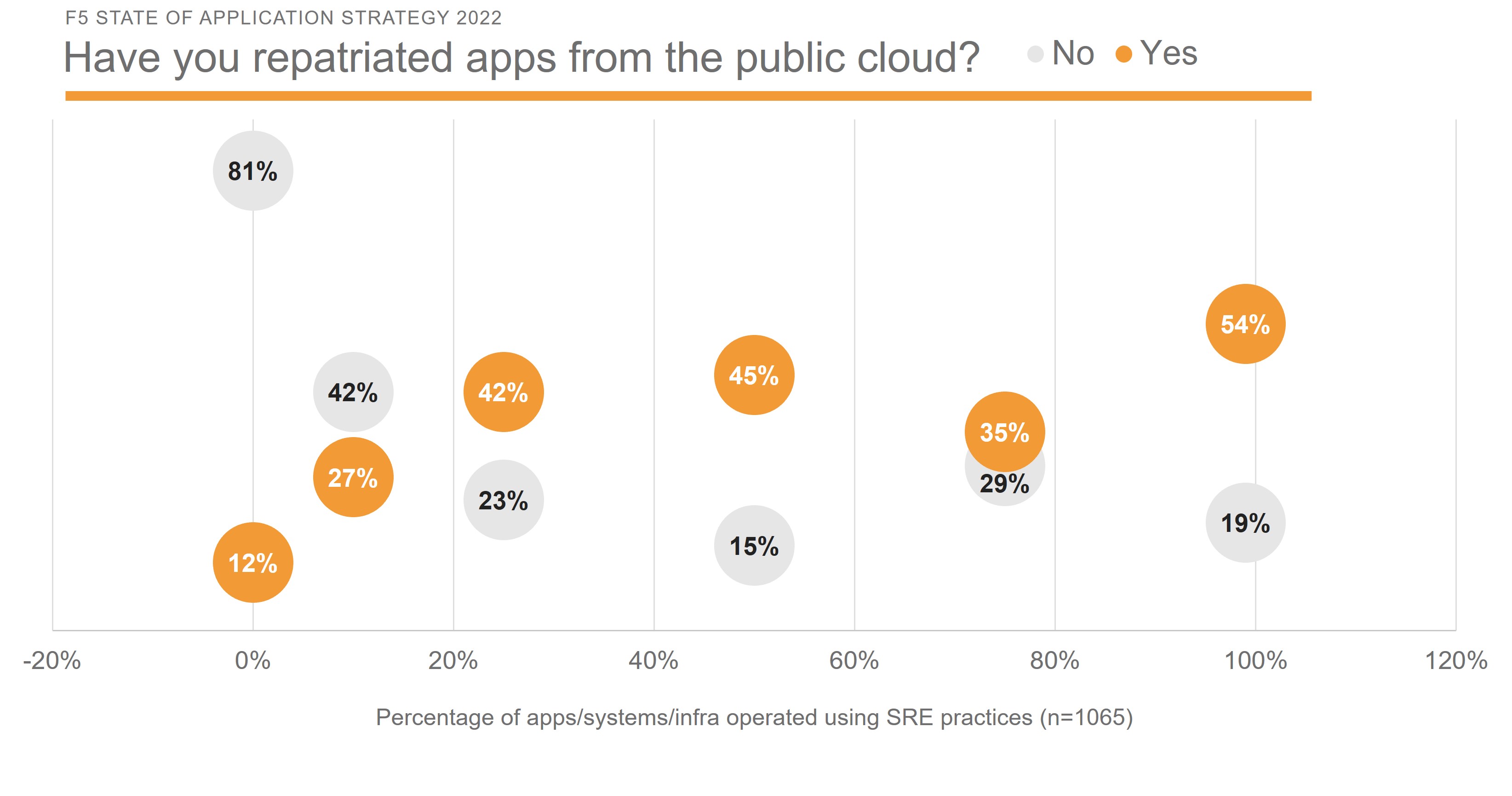A curiosa relação entre a repatriação da nuvem e as operações de SRE
Tenho uma predileção por filosofia. Faltam-me cerca de três aulas para concluir o curso e, a cada poucos anos, digo a mim mesmo que um dia vou concluí-lo. Passei meu carinho para o meu filho mais velho, que se formou em filosofia para complementar seus diplomas em ciência da computação e ciência de dados. Sim, nossas conversas por texto costumam ser bem interessantes, obrigado por perguntar.
Portanto, estou muito familiarizado com o que é conhecido em estatística — e lógica — como uma falácia post hoc, da qual obtemos o ditado “correlação não é causalidade”. Este é o erro lógico de assumir que se o evento Y seguiu o evento X, o evento Y deve ter sido causado pelo evento X. A mais famosa referência a essa falácia veio de Bobby Henderson, que ilustrou o absurdo de assumir a causalidade a partir da correlação com seu gráfico demonstrando que o aquecimento global foi causado pelo número decrescente de piratas no mundo .
Sim, isso não faz sentido, mas muitos gráficos dos quais as pessoas extraem causalidade também não. Só porque dois pontos de dados são mapeados um em relação ao outro não significa que um causou o outro. Em muitos casos, nem faz sentido lógico correlacionar os dois. Afinal, piratas e aquecimento global? Ninguém leva isso realmente a sério.
Mas é um ponto importante a ser destacado à medida que nos aprofundamos na questão da relação entre as operações de SRE e a repatriação da nuvem.
Para deixar claro, não estou sugerindo que a adoção de práticas de SRE cause repatriação da nuvem. Mas estou sugerindo que há uma relação próxima e significativa entre os dois. O fato de o Google, um provedor de nuvem , ter criado o SRE como uma prática não é um erro. O modelo, a mentalidade e os conjuntos de habilidades associados ao SRE são essenciais para operar com sucesso a infraestrutura e os serviços de nuvem.
A repatriação da nuvem é real
A repatriação da nuvem pública em si é um assunto um tanto tabu em certos círculos. Considere a controvérsia levantada pela Andreessen Horowitz quando publicou “ O custo da nuvem, um paradoxo de um trilhão de dólares ” e sugeriu que as empresas estavam repatriando da nuvem e obtendo economias de custo significativas como resultado. Alguns querem que você acredite que isso não está acontecendo, mas há dados e evidências suficientes para indicar que sim, está.
Em nosso relatório de 2021, perguntamos ao mercado sobre a repatriação da nuvem pública . Apenas 13% repatriaram aplicativos e outros 14% estavam planejando fazê-lo. Um ano depois, esse total combinado aumentou 40 pontos percentuais, para 37% e 30%, respectivamente . Isso não é uma anomalia, pois há diversas empresas de análise confiáveis relatando resultados semelhantes. Curiosamente, a taxa de repatriação não é globalmente universal. APCJ e LATAM têm muito menos probabilidade de repatriar do que EMEA e NA.
Eu afirmo que as empresas estão repatriando aplicativos da nuvem pública e a questão não é "eles estão ?", mas sim "quantas cargas de trabalho elas estão retirando e para onde elas estão indo?" Essa é uma pergunta que tentaremos responder no ano que vem, quando concluirmos nossa pesquisa State of Application Strategy 2023.
Por enquanto, estamos investigando um possível facilitador da repatriação: as operações SRE. Porque mesmo que o aumento do custo da nuvem seja um motivador do desejo de repatriação, se você não tem as habilidades para operar com a mesma eficiência em outro lugar — e, portanto, se beneficiar de custos mais baixos — então por que você repatriaria?
E postulamos que são as práticas e habilidades operacionais de SRE que permitem que as empresas repatriem e mantenham a eficiência e a economia de custos necessárias para justificar a decisão, quer estejam movendo essas cargas de trabalho para outra nuvem pública, no local ou para a borda.
Analisando os dados
Superficialmente, há uma forte correlação entre a adoção e a aplicação de práticas de SRE com a repatriação para a nuvem, o que parece indicar que as organizações com a capacidade de operar de forma semelhante à da nuvem, ou seja, que adotaram práticas de SRE, efetivamente pegam seus brinquedos (aplicativos) e vão para casa (no local ou em outro lugar) porque podem .

Em outras palavras, apenas 4% das organizações que não adotaram práticas de SRE repatriaram aplicativos da nuvem pública. Impressionantes 73% daqueles que adotaram práticas de SRE também repatriaram aplicativos.
É claro que adotar práticas não significa necessariamente aplicá -las. Então, analisamos como as organizações estão realmente operando aplicativos, sistemas e infraestrutura. Especificamente, analisamos a porcentagem de suas operações que usam práticas de SRE. Talvez não seja surpresa que isso tenha gerado resultados semelhantes.

Daqueles que operam 0% de seus aplicativos, sistemas e infraestrutura usando práticas de SRE, 81% não estão repatriando. Por outro lado, daqueles que usam práticas de SRE para 76%–99% das operações de aplicativos, sistemas e infraestrutura, 54% foram repatriados. O ponto em que a repatriação parece começar a ganhar força é quando as organizações ultrapassam o uso de práticas de SRE para operar mais de um quarto (25%) de seus aplicativos, sistemas e infraestrutura.
Lembra que observei que a APCJ e a LATAM tinham muito menos probabilidade de repatriar? Eles também têm muito menos probabilidade de aproveitar as práticas de SRE para operar seus aplicativos, sistemas e infraestrutura. De fato, mais de um quarto (26%) na América Latina e APCJ (29%) operavam ZERO por cento de aplicativos, sistemas e infraestrutura usando práticas de SRE. Na região EMEA? Isso é apenas 5%. E na América do Norte, ainda menor, 2%.
Relacionamento significativo ou curiosa coincidência?
Parece haver uma correlação indiscutível entre organizações que adotam o SRE como uma prática operacional e as taxas de repatriação da nuvem pública. Mas é um relacionamento significativo ou apenas uma coincidência curiosa?
Vou argumentar, porque este é meu blog, que é um relacionamento significativo.
As práticas e conjuntos de habilidades associados ao SRE são totalmente adequados para operar um ambiente nublado — em escala. Como eu disse antes, não é por acaso que foi o Google quem criou o SRE e literalmente escreveu o livro sobre ele. E eu já disse antes (e direi novamente) — o valor da nuvem está em seu modelo operacional, que pode reduzir drasticamente o custo por transação — seja medido por trocas HTTP ou sessões de clientes. Isso permite uma escala econômica de aplicativos e serviços digitais.
O uso de automação e práticas que tendem a se concentrar em incidentes significativos em vez de ocorrências não disruptivas proporciona uma escala econômica das pessoas (e, portanto, sua experiência) encarregadas de manter um alto nível de disponibilidade e desempenho.
A adoção e o uso de práticas de SRE permitem que as organizações dimensionem as operações de forma eficiente, seja na nuvem pública, no local ou na borda. E o que os dados nos dizem é que as organizações parecem estar usando essa capacidade para fazer exatamente isso.
Para saber mais sobre como modernizar a arquitetura e adotar operações de SRE para atender a um negócio digital, você pode ler nosso novo livro da O'Reilly, Arquitetura Corporativa para Negócios Digitais .
